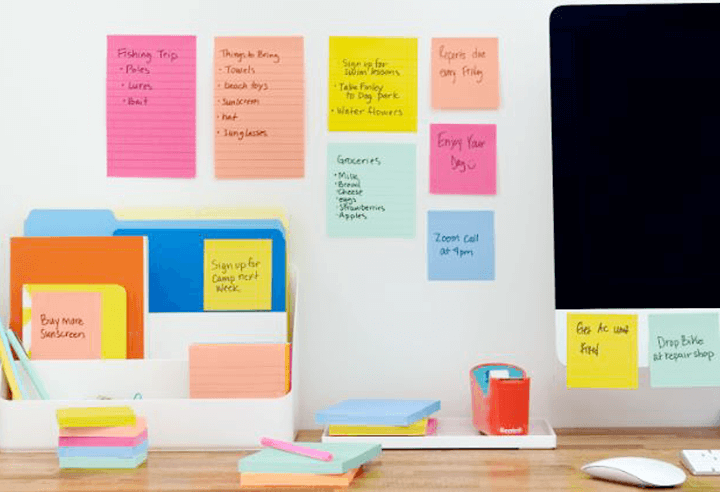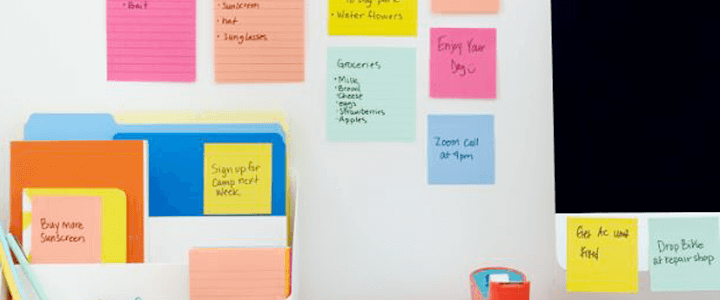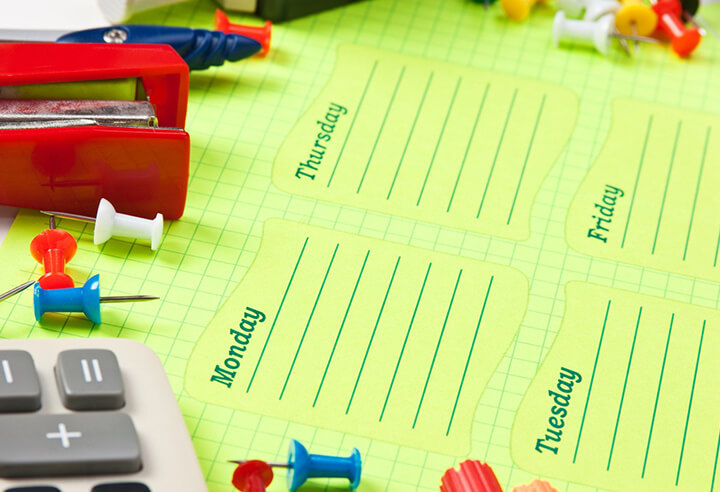The beginning of a new school year can be challenging for many kids – adapting to new classmates, a new teacher and, likely, a new environment altogether. Though initially exciting for some students, there are those who require a bit more time adjusting to back-to-school season, and the new physical and social situations that come with it.
There are steps you, as parents, can take within the home to help facilitate this transition using a variety of simple tools and products…some of which you may already have lying around. Discover a world of opportunities for introducing some much-needed positivity and year-round optimism back into your kids’ lives without breaking a sweat or breaking the bank. Here are our five best tips for bringing positivity into the house.

Teach gratitude
One of the most surefire ways to instill positive thinking in your child is by encouraging them to manifest gratitude. While that might sound like a tall order, it doesn’t have to be – sometimes, it can be as simple as jotting down a few words each day.
There is considerable power in writing out what’s on one’s mind. By creating a gratitude mural with the Post-it® Flex Write Surface in your house (somewhere communal, like the kitchen), you and your child can transcribe one or two things you both are grateful for at that moment. Once those moments are living in print, they become easier to remember and reference when life gets a little overwhelming. You can use dry erase AND permanent markers with the Post-it® Flex Write Surface, permanent marker wipes away with just water.
Show love
Back-to-school stressors are unbelievably common – for both students and parents. One of the most effective methods of easing your anxious child into a new school year is also one of the simplest: write an uplifting message on Post-it® Super Sticky Notes and put it in their lunchbox. It could be a funny joke, a charming family anecdote, or a simple “I love you”.
Or make things even more personal by laminating a favorite photograph of one of your child’s fondest memories with the Scotch® PRO Thermal Laminator. A simple gesture that takes no more than five minutes can leave a lasting impression on how your child thinks and adapts to their school day.
Make meaningful lists
Keeping kids busy, active and engaged throughout the weekend helps promote the stimulation and creativity needed to prepare them for the school week ahead! And, what a better time to start than on Saturday morning? By using some basic planning tools, you can help produce a different, more positive kind of day – one that encompasses your child’s physical and emotional needs.
Using organization products like Scotch® Double-Sided Tape to help secure motivational images or stickers, and Post-it® Super Sticky Easel Pads to safely stick to walls where you can see all of your work in action, you can create a calendar of daily tasks to help motivate your kids once they’re awake and ready to face the day. For example, “Morning Meditation from 9:00 am – 9:15 am” followed by “Breakfast Clean-Up at 10:30 am”. Meaningful tasks not only teach kids responsibility, but they also keep them busy. And staying “the right kind of busy” helps bolter moods and encourages overall positivity.
Use your head
A playful home is a positive home, and you don’t need to spend hundreds of dollars on the latest board games or handheld gaming consoles to get together as a family and create lasting memories. Sometimes, impromptu play can be the best kind.
One of our favorites involves a piece of construction paper, a marker, some Scotch® Double-Sided Tape and a pad of Post-it® Super Sticky Notes from the new Summer Joy Collection: simply cut a long strip from the construction paper and wrap it around your child’s head (like you’re fitting him or her for a crown). Once the strip fits snugly on their head, fasten the ends together with a piece of tape. Then, write a word or phrase on the note, stick it onto their construction paper headband, and, using only hand actions, have your child act out the clue until the right answer is guessed. Alternate back and forth and make a night of it!
Say it loud
At home, kids can benefit from learning how to train their minds to recognize their own positive traits. One of the best ways to aid in this self-training is by writing and reciting daily affirmations.
Using Post-it® Super Sticky Notes, encourage your kids to form their own self-affirmations and write them down. Then, stick these notes on their bedroom desks or on the bathroom mirror so that they can recite them aloud while getting ready for school. Simple, yet effective ways of manifesting positivity.
We hope you enjoyed these creative tips for bringing positivity into the home. Discover more products for encouraging year-round optimism that your kids can take with them back to school – and beyond!
School supplies are available from www.jacobsgardner.com





